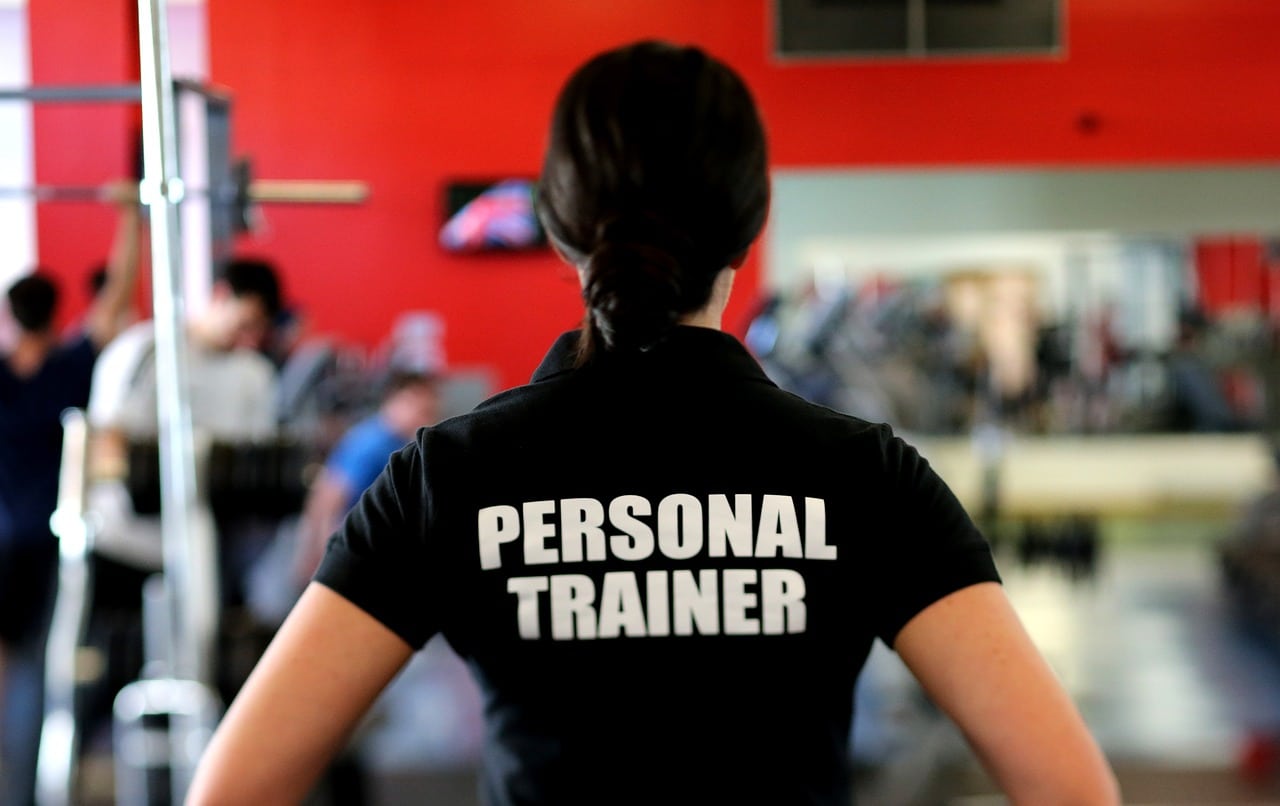Maybe you chanced upon sand running in a Navy SEAL training video. Maybe your friend recommends it.
Or, perhaps you saw it in movies like Baywatch, where characters (e.g., Dwayne Johnson as “Mitch” and Zac Efron as “Matt Brody”) used it as a form of physical training.
Regardless of how you first came across sand running, your interest is piqued.
You think it looks cool and may offer unique fitness benefits, so you’d like to give it a go.
But here comes the all-important question: Should you?
Is running on sand truly good for your physical fitness and performance? After all, wouldn’t the instability put injury-causing (or injury-exacerbating) stress on your joints, like the knees and ankles? The answer is yes and no, respectively.
Find out why in this article.
#1: Less Stress on Weight-Bearing Joints (Compared to Running on a Hard Surface)
Running is a high-impact exercise.
According to a 2013 study published in the Proceedings of the Institution of Mechanical Engineers, running on a hard surface (e.g., pavement or treadmill) could put a force of up to four times your body weight on your joints.
Given running’s repetitive nature, those who clock high mileages could thus accumulate significant impact stress on their joints, increasing their risk of stress fractures, joint pain, and other musculoskeletal injuries.
Good news: Sand is a fantastic shock absorber.
Like a well-cushioned running shoe, sand provides more give than firmer surfaces. It shifts with every foot strike.
So, while your energy transfer isn’t as clean as with, say, concrete pavement, sand helps dissipate more force from the bottom of your feet. This results in less stress on your weight-bearing joints, from your hips to knees to ankles, potentially decreasing your risk of impact-associated overuse injuries.
Research backs that up.
In a small 2017 randomized controlled trial published in the European Journal of Sport Science, researchers found that participants who ran on soft sand experienced less musculoskeletal inflammation than those who ran on grass.
This finding aligns with a 2014 study published in the Journal of Sports Sciences.
To quote the study’s coauthor, Martyn Binnie, Ph.D., a physiologist at the Western Australia Institute of Sport: “With every foot strike, there is almost four times less impact force on soft sand versus firm ground like grass.”
#2: Challenges Neglected (or Under-Activated) Muscles Used in Running
Running, especially on the pavement or a treadmill, is a uni-planar (i.e., it occurs only in one plane, specifically, the sagittal plane) exercise.
Individuals who solely run and do not engage in multi-planar training—through weightlifting, practicing yoga, or boxing—are thus at increased risk of muscular imbalances, which then increase the risk of injuries, including runner’s knee and IT band syndrome.
Often, the common weakest links for runners include what’s known as the “stabilizing muscles,” glutes, hamstrings, hips, and ankles.
Sand running could help with that.
How? Well, remember what we said about the sand shifting with every stride? This challenges your stability and forces your body to engage muscles that aren’t as well-activated during runs on firm surfaces.
For instance, a 2005 electromyography (EMG) study published in the European Journal of Applied Physiology recorded higher electrical activity (i.e., more muscle activation) in the hamstrings and tensor fascia latae, a muscle in the lateral hip and thigh that helps control hip flexion and abduction.
Also, a more recent 2021 study published in Biomedical Engineering Online found that participants who ran on sand reported higher glute activation than those who didn’t.
Hamstrings, check. Hip muscle, check. Glutes? Check, too. All that’s left are ankles. Can sand running help with that? Yes, it can.
According to a 2021 study published in Frontiers in Physiology, individuals who ran on sand experienced an increase in the activity of ankle dorsiflexors (i.e., various muscles responsible for flexing your foot toward the shin), like the tibialis anterior.
It’s not just your hamstrings, hip muscles, glutes, and ankles that’ll see higher activation from sand running, either. The calves will, too.
In a 1998 study published in The Journal of Strength and Conditioning, researchers found that runners assigned to sand running experienced a greater increase in calf circumference after a six-week endurance program than those in the “hard surface running” and “no running” groups.
And since the calf muscle plays an important function in driving the movement of stepping on the ground and moving forward when in motion, an increase in size may improve running performance (and athletic performance, in general).
#3: More Efficient at Improving an Individual’s Fitness Level (Compared to “Milder” Forms of Exercise)
Because of how soft it is, running on sand reduces your likelihood of suffering an impact injury.
But there’s a flip side to every coin; while sand running represents a lower-impact exercise option compared to hard surface running, you’ll find it tougher to hit the same speed and distance. This is due to two reasons (which we’ve briefly covered in the previous sections):
- Less optimal energy transfer: When you run on firm ground, less elastic energy stored in your tendons gets absorbed (i.e., “wasted”). As mentioned earlier, sand doesn’t extend the same courtesy. Instead, it absorbs more elastic energy, forcing your body to generate more force in your muscles to keep you moving forward.
- Increased activation of lower limb muscles: Sand’s uneven and soft nature forces your lower limb muscles, from the hip-stabilizing muscle to hamstrings to calves, to work harder.
And there you have it: the perfect recipe for a more metabolically demanding workout session (assuming you keep distance and speed equivalent to hard surface running).
But how much more demanding are we talking about? Can we quantify it? Science says yes.
Researchers in a 1998 study published in The Journal of Experimental Biology found that running on sand requires 1.6 times as much energy expenditure as running on a firmer surface. A later 2001 study published in The Journal of Science and Medicine in Sport agrees. It found that sand running required 1.5 to 1.6 times more energy than on a grass surface.
So, is this increased intensity good for your physical fitness? Well, yes, especially if you’re using sand running to replace low-intensity exercises (e.g., slow jogging, stretching, and walking).
In the most extensive study to date aimed at understanding the relationship between regular physical activity and a person’s physical fitness, researchers found that bouts of moderate-vigorous physical activity helped improve an individual’s cardiovascular function and fitness to a significantly greater extent than “milder” forms of exercise.
According to a previously mentioned 2014 study comparing the use of sand and grass training surfaces during an eight-week conditioning program, participants in the sand group experienced significantly greater improvements in Vo2 max (a measure of the maximum amount of oxygen the body can use during exercise) than those in the grass group.
As a result, the researchers concluded that substituting sand for grass training surfaces could significantly increase the participants’ relative exercise intensity and training load—subsequently leading to superior improvements in aerobic fitness.
#4: May Lower Perceived Rate of Exertion
Given that sand running forces your body to work harder with each step, wouldn’t it all be … well, too challenging? What if you can’t sustain the pace and distance of your regular runs? What if you take a few steps, and your body goes, “nope”?
Don’t let the fear of finding sand running too tough keep you from trying it.
Research consistently shows that individuals who exercise outdoors (and sand running is most definitely outdoors) can achieve and maintain a higher workout intensity with lower levels of perceived exertion than those exercising indoors.
Take this 2017 study published in PLOS One, for instance.
The researchers divided participants into three groups: one group hiked indoors for 45 minutes, another walked on a treadmill indoors for 45 minutes, and the control group did nothing. They then had all participants rate their mood, feelings, and arousal.
The results? While both walking groups experienced more benefits than those in the control group, the outdoor exercises scored the best on all measures.
More specifically, the hiking group reported feeling more awake, energized, attentive, and happy than those on the treadmill. They also said they felt less fatigued after their workout. Basically, although the outdoor hikers and indoor treadmill walkers did the same amount of exercise, the former felt that their session was easier—mentally and physically.
A 2014 study published in the Journal of Strength and Conditioning Research supports this finding.
The researchers found that outdoor cycling allowed cyclists to exercise at a higher intensity than in laboratory (i.e., indoors) cycling without an associated increase in perceived exertion, despite similar environmental conditions.
So, what does this all mean for you? Answer: With sand running, you’ll likely be able to push yourself harder without feeling out of your depth.
#5: Could Enhance Fitness Capabilities and Exercise Adherence When Done Mindfully
When you’re running on the sand, you’re unlikely to keep your earbuds or headphones plugged in. That’s because you’ll have to listen for other runners trying to pass you, potentially dangerous rising tides, and the occasional frisbee heading straight to your face.
This increases the likelihood that you’ll exercise mindfully (i.e., remain present as you run)—which, in turn, benefits your physical fitness by:
- Improving your mental health: A 2017 study published in Mindfulness found that when mindfulness was combined with exercise, participants showed improvements in stress, depression, and anxiety. Research consistently shows that people with better mental health are more likely to stay physically active.
- Improving your physical health: A 2015 study published in the American College of Lifestyle Medicine shows that mindful fitness can improve breathing, heart rate, and parasympathetic activity, potentially helping exercisers achieve and maintain a higher workout intensity.
- Strengthening your commitment to your workout routine: According to a 2010 study published in Behavior Research and Therapy, exercisers with higher mindfulness scores were better able to stay consistent with their exercise plans. Another 2009 study published in Appetite found that those who applied mindfulness meditation practices to their daily or weekly routine had a much higher level of physical exercise and general movement than those who didn’t practice mindfulness.
- Increasing your satisfaction levels (with the workout session): A 2016 study published in the Journal of Health Psychology found that people have increased levels of satisfaction when engaged in mindful fitness, especially if they’ve previously had a tough time making exercise a habit. A large body of evidence links positive feelings during exercise—like enjoyment and satisfaction—with improved physical activity adherence.
What to Know Before Your First Run on the Sand
Excited to hit the sand? Don’t find the nearest beach just yet; here are a few tips to keep in mind before you head out for your first sandy run.
Stay Away If You Have a History of Knee, Ankle, or Hip Injury
Sand running offers many unique fitness benefits. That said, it’s not for everyone.
If you have a history of knee, ankle, or hip injury, it may not be a good idea for you to run on sand because it’ll demand more out of those areas—and, in turn, potentially aggravate past injuries—than with hard surface running.
Still want to give sand running a go nonetheless? Consider consulting a podiatrist or physical therapist before starting; they’ll have the necessary expertise to judge if sand running is a good fit for you.
Ease into me
As with starting any new exercise routine, ease into sand running to minimize soreness and reduce injury risk.Always warm up and pay extra attention to your posterior chain muscles, like the calves, hamstrings, and glutes. Since sand is harder to run on, you may wish to go slower than you think you have to before increasing time and intensity to equivalents of your hard surface runs (or your goal runs).
Also, start on wet, firm sand. You’ll find it much easier to run on than soft and dry sand.
Once your body gets accustomed to running on wet sand, slowly add one- or two-minute intervals on the softer sand, returning to the wet sand in between. Then, gradually increase your duration on dry sand.
Shoes or Barefoot?
Ultimately, this comes down to personal preference and where you’re running.
If you think you’ll be staying close to the water, it’ll be best to wear shoes to protect your feet from crushed seashells or small rocks.
On the other hand, if you’re running on soft, dry sand, you may wish to go barefoot so the sand doesn’t fill your shoes and weigh you down. That said, try not to head out for a long-distance run the first time you ditch your shoes.
Supportive shoes act as ankle stabilizers—and provide elevated heel and arch support that your feet are used to.
So, start with short runs (e.g., 15 minutes or so) to build strength in your ankles. And, of course, broken glass and seashells aren’t exclusively found on wet sand, so always keep a lookout for them, nonetheless.
Always Do an “Out-and-Back”
Even the most level beaches have some slant to them.
And running on an angled surface can place additional stress on your knees and hips, especially on the side closer to the water, increasing your risk of injuries.
To even out this natural imbalance, run both directions on the beach (i.e., do an out-and-back).
Avoid the Warmest Part of the Day
Try to avoid running between 10 am and 2 pm, when the sun rays are at their strongest. (Yes, this applies even during winter!)
To further decrease your risk of burns, sun-induced premature skin aging, and skin cancer, sunscreen is also a good idea. For reference, the American Academy of Dermatology recommends that everyone use sunscreen that offers broad-spectrum protection, SPF 30 or higher, and water resistance (especially important since you’ll get close to water).
Oh, and here’s another tip: Ensure you hydrate properly by having plenty of water available before, during, and after your sand runs.
Main Takeaways
From offering a more joint-friendly workout to targeting common lagging muscle groups to improving adherence to a workout routine, sand running can provide many unique physical fitness benefits (especially when compared to hard surface running or “milder” forms of exercise).
However, it’s important to remember that it may not suit everyone.
Those with existing or a history of hip, knee, and ankle injuries may wish to consult a podiatrist or physical therapist for advice.
And if you’re giving sand running a go, keep these tips in mind: Start slow to gradually build up your tolerance, always run in both directions along the beach (to make up for the uneven slope), and avoid running when the sun rays are at their strongest. Consider finding a qualified, holistic health coach to assist you in your fitness goals.
Finally, shoes are always a good idea unless you’re confident you won’t slice your feet on broken glass, seashells, or other sharp objects—and your ankles are strong enough to (quickly) adapt to the increased demands of sand running.
Learn How to Become a Certified Personal Trainer Online in Less Than 6 Months

References
- https://www.tandfonline.com/doi/abs/10.1080/14763141.2016.1212918
- https://www.ncbi.nlm.nih.gov/pmc/articles/PMC3324308/
- https://www.ncbi.nlm.nih.gov/pmc/articles/PMC9146857/
- https://pubmed.ncbi.nlm.nih.gov/28402191/
- https://pubmed.ncbi.nlm.nih.gov/24479768/
- https://pubmed.ncbi.nlm.nih.gov/19047768/
- https://pubmed.ncbi.nlm.nih.gov/1327762/
- https://pubmed.ncbi.nlm.nih.gov/15815938/
- https://www.ncbi.nlm.nih.gov/pmc/articles/PMC8627070/
- https://www.ncbi.nlm.nih.gov/pmc/articles/PMC8793830/
- https://journals.lww.com/nsca-jscr/Abstract/1998/05000/A_Comparison_of_the_Endurance_Training_Responses.3.aspx
- https://pubmed.ncbi.nlm.nih.gov/8896092/
- https://pubmed.ncbi.nlm.nih.gov/35319797/
- https://journals.plos.org/ploscompbiol/article?id=10.1371/journal.pcbi.1009608
- https://pubmed.ncbi.nlm.nih.gov/9622579/
- https://www.sciencedirect.com/science/article/abs/pii/S1440244001800517
- https://academic.oup.com/eurheartj/article/42/44/4565/6357860?guestAccessKey=0b1725b7-7262-4136-925b-bcc5116afd57&login=false
- https://journals.plos.org/plosone/article?id=10.1371/journal.pone.0177719
- https://pubmed.ncbi.nlm.nih.gov/24476776/
- https://link.springer.com/article/10.1007/s12671-016-0593-x
- https://bmcmedicine.biomedcentral.com/articles/10.1186/s12916-020-01782-9
- https://journals.sagepub.com/doi/10.1177/1559827614564546
- https://www.sciencedirect.com/science/article/abs/pii/S0005796710000835?via%3Dihub
- https://www.sciencedirect.com/science/article/abs/pii/S0195666308006181
- https://journals.sagepub.com/doi/10.1177/1359105314567207
- https://www.scirp.org/journal/paperinformation.aspx?paperid=53271
- https://pubmed.ncbi.nlm.nih.gov/18785416/
- https://www.aad.org/media/stats-sunscreen



